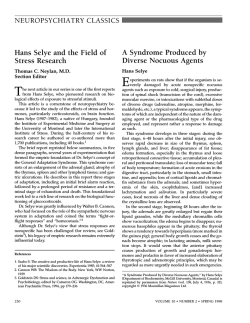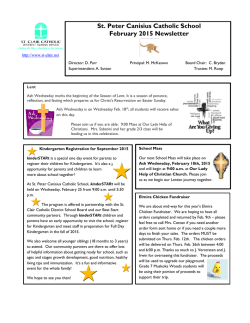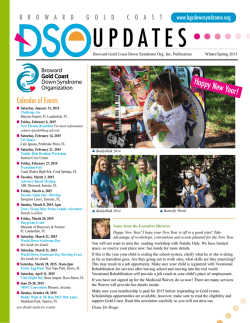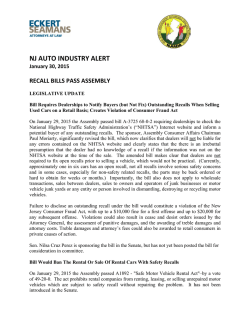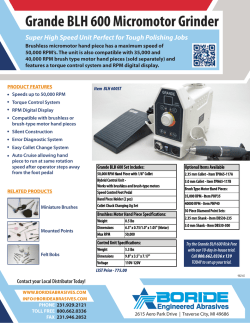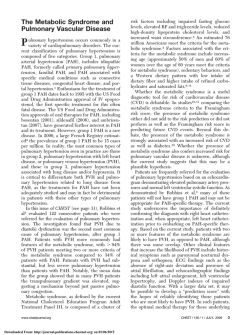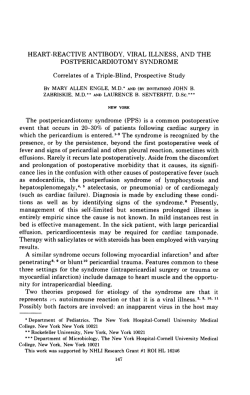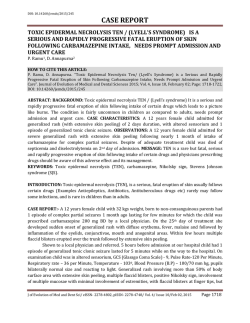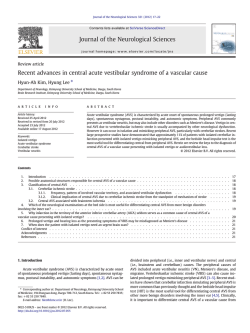
Comparison of different therapy approaches in children with Down
Pediatrics International (2003) 45, 68–73 Clinical Investigations Comparison of different therapy approaches in children with Down syndrome MINE UYANGK, GONCA BUMIN AND HÜLYA KAYGHAN Hacettepe University School of Physical Therapy and Rehabilitation, Occupational Therapy Unit, 06100 Samanpazarı-Ankara, Turkey Abstract Background: Children with Down syndrome have sensory integrative dysfunction as a result of limited sensory experience from lack of normal motor control. The aim of the present study was to compare the effects of sensory integrative therapy alone, vestibular stimulation in addition to sensory integrative therapy and neurodevelopmental therapy, on children with Down syndrome. Methods: The present study was carried out at the Occupational Therapy Unit, School of Physical Therapy and Rehabilitation of Hacettepe University. Forty-five children who were diagnosed as having Down syndrome by the Departments of Paediatric Neurology and Medical Genetics at Hacettepe University were assessed and randomly divided into three groups. Sensory integrative therapy was given to the first group (n=15), vestibular stimulation in addition sensory integrative therapy was given to the second group (n=15) and neurodevelopmental therapy was given to the third group (n=15). All children were evaluated with Ayres Southern California Sensory Integration Test, Pivot Prone Test, Gravitational Insecurity Test and Pegboard Test. The hypotonicity of extensor muscles, joint stability, automatic movement reactions and locomotor skills were tested. Treatment programs were 1.5 h per session, 3 days per week for 3 months. Results: When these groups were compared, statistically significant differences were found in subjects’ performance of balance on right foot-eyes open, pivot prone position–quality score and locomotor skills-front tests (P<0.05). There were no significant differences in the other tests (P>0.05). Conclusion: The results of the present study showed that sensory integration, vestibular stimulation and neurodevelopmental therapy were effective in children with Down syndrome. It was concluded that when designing rehabilitation programs for children with Down syndrome, all treatment methods should be applied in combination, and should support each other according to the individual needs of the child. Key words Down syndrome, occupational therapy, physical therapy. Down syndrome is a type of mental retardation that has an effect on motor development of children. Neuromuscular abnormalities in children with Down syndrome, which have been observed to be coincident with developmental delays, include generalized muscular hypotonia, the persistence of primitive reflexes beyond their normal disappearance with age, and slowed reaction times during voluntary movement.1,2 Children with Down syndrome have a predominance of primitive, spinally controlled muscle response patterns over more centrally integrated and co-ordinated movement patterns. This is due to poor myelination of the descending Correspondence: Gonca Bumin, PT, PhD, Assist. Prof. Hacettepe University, School of Physical Therapy and Rehabilitation, 06100 Samanpazarı-Ankara, Turkey. Email: [email protected] Received 10 July 2001; revised 12 June 2002; accepted 12 July 2002. cerebral and brain stem neurones, and a reduction in both the number and connections of neurones in higher nervous centers, such as the motor cortex, basal ganglia, cerebellum and brain stem. Based on behavioral observations of developmental delay, clinicians have conducted a number of research projects involving early therapeutic intervention for children with Down syndrome. These studies have attempted to facilitate normal mental and motor development through a variety of stimulation techniques, with mixed results.2–4 Automatic postural reactions are considered to be essential components of motor behaviors. Postural reactions work together as a unified system to maintain body alignment and proper posture during movement.5 Infants with Down syndrome have delayed motor development, including a delay in postural reactions.6 When motor development of a child with Down syndrome is compared with that of a developmentally normal child, a Down syndrome consistent delay is observed in the acquisition of both postural and voluntary components of motor control.7,8 The vestibular system plays a major role in the expression of early motor behavior. Previous research has cited extensive neural connections between the vestibular apparatus and the motor system.9 Children with Down syndrome have sensory integrative dysfunction as a result of limited sensory experience from lack of normal motor control. Physical, cognitive and sensory integration problems decrease the functional ability of children in activities of daily living.9–11 Neurodevelopmental approaches, sensory integrative therapy and vestibular stimulation have been used to improve function in children with Down syndrome.8,12–16 The aim of the present study was to compare the effects of sensory integrative therapy alone, vestibular stimulation in addition to sensory integrative therapy and neurodevelopmental therapy in children with Down syndrome. Methods Participants This study was carried out at the Occupational Therapy Unit, School of Physical Therapy and Rehabilitation of Hacettepe University. Forty-five children with Down syndrome diagnosed by the Departments of Paediatric Neurology and Medical Genetics were included in the study. They were assigned into three groups according to the date of admittance to our clinic. Pre-school children were not included in the study because it may be difficult for these children to cooperate with the sensory integration and other tests. To provide homogeneity between groups and to ensure cooperation of the children with these tests, an age range between 7 and 10 years was selected. Children with complications were examined. None of the children had a history of epilepsy. There were two children with congenital heart disease in the first group, two in the second group and three in the third group. All children with congenital heart disease had been previously operated on. The children’s complications were not severe, so their developmental skills were not influenced. There was one child with atlantoaxial instability in the second group; however, there were no neurological signs. There was no spinal cord compression in his computerized tomography and developmental milestones of skills were not influenced. Sensory integrative therapy was applied to the first group, vestibular stimulation and sensory integrative therapy were applied to the second group and neurodevelopmental therapy was applied to the third group. We did not establish a control group in this study because withholding treatment from these children would not be ethical. 69 Ayres Southern California Sensory Integration Tests (SCSIT) was used to assess sensory integration problems. Design copying (DC), imitation of posture (IP), and standing balance on right and left foot–eyes open and closed (BEORL, BECR-L) subtests of SCSIT were used.17 Pivot prone position test (PPP), hypotonicity of extensor muscles, joint stability (co-contraction) and gravitational insecurity tests were used to assess the vestibular system.18 Automatic movement reactions were used to assess reflex development. Locomotor skills, ten step forward walking (LS-f) and ten step sideways walking (LS-s), were tested. A pegboard test was used to assess fine motor skills of the hand.19 Test definitions Pivot prone position test (PPP) While in the prone position, the child was asked to perform head, trunk and hip extensions. The maintenance time of this position was recorded with a stopwatch. The quality of response was graded, with the following responses each receiving one point using the following parameters: (Children aged 6 years and older who were able to maintain the position for 30 s would obtain a quality score of 6) • Position assumed smoothly, quickly, and nonsegmentally • Head position held steadily and within 45º of vertical • Upper trunk (shoulders, chest and arms) raised off floor, arms abducted and externally rotated approximately 90º, elbows flexed approximately 90º • Distal one third of thigh raised far enough off floor to allow examiner to place fingers between distal thigh and floor, knees can be flexed • Knees flexed 30º or less, thighs do not have to be off floor, but feet cannot touch floor • Able to talk in this position Hypotonia of extensor muscles Hyperextensibility of distal joints, hypotonic posture in standing, including lordosis and hyperextended and/or locked knees and muscle tone by palpation were tested. Joint stability (co-contraction test) Quadripedal position was used for this test. Head neutral, hip, shoulder and knees 90º flexion, fingers extension, elbows semiflexion and straight back were accepted as the normal position. While the children were in this position, the presence of lordosis, hyperextension, rising medial side and inferior angulus of scapula and excessive scapular adduction were assessed. 70 M Uyangk et al. Gravitational insecurity Table 1 The demographic characteristics of all subjects Gravitational insecurity was assessed according to the emotional reactions to vestibular stimuli on the tilt board. Groups Automatic movement reactions Total Group 1 Group 2 Group 3 15 15 15 No. subjects Female Male 7 6 7 8 9 8 Age (years) (mean~SD) 9.60~0.51 8.67~0.45 8.53~0.50 Protective extension and equilibrium reactions were scored as negative or positive in standing and kneeling position. Locomotor skill tests The time of ten step forward walking (LS-f) and ten step sideways walking (LS-s) on a straight line were recorded. Pegboard test The time of placing 20 pegs was recorded for both hands. While the treatment program was applied, a sequence of normal motor development was followed. The therapy progression was done step by step, from simple to complex, and until the skills at one stage were achieved, there was no progression to the next stage. Groups Group 1: Sensory integrative therapy The following activities were completed by group 1: 1. Visual perception activities: Block design, finding shapes in pictures, puzzles, matching geometric shapes and letters, numbers, and classification. 2. Body awareness: Pointing to the body parts, life-size drawing, turning left and right side and awareness of the body parts through touch. 3. Tactile perception: Feeling various textures, touching boards and feeling shapes. 4. Visual-motor co-ordination training: Ocular-pursuit training, moving ball and pegboard activities.14,20,21 3. Reducing gravitational insecurity: Self-initiated linear vestibular stimulation in non-threatening positions with speeds and durations tolerable to the children.18 Group 3: Neurodevelopmental therapy Included following activities: 1. Tonic postural extensor muscle strengthening: Push-pull scooter board games against resistive tubing strips, move different ways using dowels, and basketball drop games. 2. Developmental movement patterns training: Obstacle crawl, hold swing’s ropes in kneeling and half kneeling position, throw balls to targets in kneeling and standing position. 3. Walking activities: Forward, backward and sideways walk, animal walks (like crab and cat), line walks and steppingstones. 4. Fine motor activities: Cutting with scissors, copying designs, chalkboard activities, working different cubes and pegboard designs.22,23 Treatment programs were applied for 1.5 hours a day, 3 days per week for 3 months. The home program was given to all groups. All subjects were assessed at the beginning of the therapy and after 3 months. Statistical analysis Descriptive statistics, ANOVA and McNemar Test were applied to gained scores in order to compare the three groups. The differences between the pre-test and post-test mean were compared by paired t-test. Group 2: Sensory integration therapy and vestibular stimulation Results In addition to the sensory integration therapy applied in the first group, vestibular stimulation was applied to the second group. These included: 1. Linear swinging: With platform swing in standing and kneeling position, with T-swing and platform swing in sitting position, with platform swing quadruped position and with platform swing in prone and supine positions. 2. Developing equilibrium reactions: Push-pull and movement of the support surface on tilt board on sitting and standing position, activities on therapy ball in prone position, active maintenance of balance on stairs and ramps. Table 1 summarizes the demographic characteristics of the subjects. The children’s age range was between 7 and 10 years. The mean~SD age of the children was 9.60~0.51 years in the first group; 8.67~0.45 years in the second group; and 8.53~0.50 years in the third group. In order to investigate whether there was a difference among groups pre-treatment, ANOVA was performed. When compared to pre-treatment test values, there was no significant difference between the three groups in all tests (Table 2). Down syndrome Table 2 Comparison of pretreatment evaluations Score Tests mean Balance eyes closed (right) Group 1 2.00 Group 2 2.47 Group 3 2.46 Balance eyes closed (left) Group 1 1.27 Group 2 1.35 Group 3 1.40 Balance eyes open (right) Group 1 6.93 Group 2 7.20 Group 3 8.00 Balance eyes open (left) Group 1 5.80 Group 2 6.13 Group 3 6.40 Pivot prone position (time) Group 1 21.06 Group 2 20.86 Group 3 22.73 Pivot prone position (score) Group 1 4.20 Group 2 4.00 Group 3 3.60 Design copying Group 1 4.00 Group 2 3.40 Group 3 3.26 Imitation of posture Group 1 10.27 Group 2 13.20 Group 3 10.67 Locomotor skills (front) Group 1 6.93 Group 2 6.27 Group 3 7.13 Locomotor skills (side) Group 1 8.67 Group 2 8.45 Group 3 8.73 Peg right hand Group 1 302.80 Group 2 345.06 Group 3 298.13 Peg left hand Group 1 313.80 Group 2 329.06 Group 3 342.86 Table 3 Comparison of differences between groups ANOVA SD F 71 P 3.74 2.44 2.72 0.12 >0.05 1.38 1.24 1.41 0.62 >0.05 4.28 5.44 6.24 0.52 >0.05 4.85 4.77 4.65 0.34 >0.05 12.08 15.43 18.79 0.06 >0.05 0.77 1.19 1.25 0.84 >0.05 3.54 2.66 3.36 0.59 >0.05 5.90 6.49 4.62 1.15 >0.05 1.87 2.15 1.64 0.86 >0.05 2.47 1.72 1.62 0.12 >0.05 9.61 7.56 8.66 0.96 >0.05 7.78 8.94 9.18 0.39 >0.05 Tests Score mean Balance eyes closed (right) Group 1 1.33 Group 2 2.40 Group 3 1.80 Balance eyes closed (left) Group 1 1.53 Group 2 2.20 Group 3 2.00 Balance eyes open (right) Group 1 2.60 Group 2 10.33 Group 3 6.13 Balance eyes open (left) Group 1 3.47 Group 2 8.93 Group 3 4.87 Pivot prone position (time) Group 1 5.87 Group 2 14.13 Group 3 6.00 Pivot prone position (score) Group 1 0.33 Group 2 0.80 Group 3 1.07 Design copying Group 1 1.93 Group 2 1.67 Group 3 2.53 Imitation of posture Group 1 1.87 Group 2 3.27 Group 3 1.80 Locomotor skills (front) Group 1 0.60 Group 2 1.13 Group 3 1.73 Locomotor skills (side) Group 1 0.93 Group 2 1.33 Group 3 .20 Peg right hand Group 1 28.40 Group 2 30.67 Group 3 24.87 Peg left hand Group 1 17.53 Group 2 41.20 Group 3 27.40 ANOVA SD F P 2.64 1.80 1.57 1.02 >0.05 2.13 1.52 1.81 0.52 >0.05 2.75 10.76 5.46 4.40 <0.05* 7.76 11.13 4.17 1.80 >0.05 12.96 13.21 6.70 2.61 >0.05 0.62 0.77 0.96 3.26 <0.05* 3.37 1.68 1.73 0.52 >0.05 1.30 2.63 1.93 2.50 >0.05 0.83 0.74 0.96 6.69 <0.05* 1.75 1.40 1.08 0.30 >0.05 35.23 40.02 17.98 0.12 >0.05 18.57 54.18 20.23 1.72 >0.05 *P<0.05. ANOVA was performed to compare groups after treatment. The data including mean differences (MD), standard deviation (SD), and the ANOVA are presented Table 3. When pre and post-test values of the first group (sensory integrative therapy) were compared, results indicated a statistically significant improvement only in sensory integration subtests and fine motor skills (P<0.05). In the second group (sensory integrative therapy and vestibular stimulation), significant improvements were observed in sensory integrative subtests, vestibular system, fine hand skills, reflex development and gravitational insecurity (P<0.05). 72 M Uyangk et al. In the third group (neurodevelopmental therapy), there were significant differences in all capabilities (P<0.05). In BEOR, PPP-s and LS-f tests, there were significant differences among all three groups, while in other tests there was not a significant difference. The children in the first group had lower scores in all tests except DC and pegboard tests, than the second and third groups. The children in the second group had higher scores in all tests except PPP-s, DC and LS-f than the other groups, but those scores were not statistically significant (P>0.05). The children in the third group have higher scores in PPP-s, DC, and LS-f tests. The differences between this group and the other groups was significant (P<0.05). Discussion The results of the present study indicated that vestibular stimulation in addition to sensory integrative therapy and neurodevelopmental therapy was much more effective than the sensory integrative therapy alone. Children with Down syndrome have muscular hypotonia, joint hypermobility and loss of balance.24–26 Connoly and Michael examined the effects of hypotonicity on balance, finding that the hypotonus, pelvic stability and pes planus affect ability to balance.24 In the present study the mean times of subjects’ ability to balance on one leg were found to be low, at 7.73~0.87 s with eyes open, and 2.22~0.34 s with eyes closed.24 In the present study subjects in all three groups obtained low scores on the posture imitation test which was used to assess praxis. In accordance with previous studies, the results of study showed that children with Down syndrome have motor planning impairment. Children with Down syndrome suffer from loss of visual motor control laterality, loss of balance and slow running speed.3,27,28 In the present study, children in all three groups obtained low scores on the DC test which was used to assess visual motor co-ordination and visual perception. The mean scores obtained were 3.22~0.60 out of a possible total of 26 points. The results of the present study support the results of previous studies. Studies in the published literature have shown that different therapy programs have been used to facilitate mental and motor developments. Sensory integrative therapy, perceptual–motor training, neurodevelopmental therapy, vestibular stimulation and play therapy have been used either as sole treatment programs or as combined programs according to the necessity of the children with motor problems.4,15,29–31 Although there was a significant difference in DC and posture imitation tests, in the first group who received sensory integrative therapy alone there was not any difference in locomotor skills and balance (P>0.05). In the second group who received sensory integration and vestibular stimulation, there was a significant difference in all tests except for locomotor skill-side (P<0.05). In the third group undergoing the neurodevelopmental therapy, there were significant differences in all capabilities (P<0.05). Kantner et al. have shown that effectiveness of the vestibular stimulation training has a positive effect on motor skills in children with Down syndrome.12 Kelly described the effects of rotational vestibular stimulation to increase gross motor co-ordination in children and adults.32 Kelly showed that rotational vestibular stimulation was effective in increasing reflex integration, balance, intellectual functions, perception– motor skills, hearing–language and socioemotional development.32 McLean and Baumeister examined the effects of vestibular stimulation in two children with Down syndrome; at the end of the training, it was seen that there was an important improvement in arrangement and equilibrium reactions.33 The results of the present study were similar to the results of the other studies, showing the effectiveness of vestibular stimulation in children with Down syndrome. Neurodevelopmental therapy, proprioseptive neuromuscular facilitation and sensory feedback techniques have been used to develop the integration of postural responses.25,31 Harris applied neurodevelopmental therapy according to the individual needs of children with Down syndrome. Neurodevelopmental therapy was applied 3 days per week for 9 weeks. There was no significant difference between the neurodevelopmental therapy group and the control group.15 Anderson et al. stated that play therapy in addition to neurodevelopmental therapy developed cognitive and perceptual skills and was useful for increasing subjects’ motivation for participating in the therapy.34 Haley showed the effects of therapeutic and educational programs and postural reactions stimulation in decreasing motor retardation in babies with Down syndrome.35 In the present study, the neurodevelopmental therapy group (group 3) showed an important improvement in balance, visual motor co-ordination, praxis, fine motor and locomotor skills after 3 months of therapy. When compared with first and second group, the third group had much higher scores in PPP, DC and LS. Because neurodevelopmental therapy includes postural tonus, reflex reactions and movement patterns, the children in the third group showed greater improvement of extensor hypotonus and joint stability. This would have affected the PPP scores. The success in locomotor skills and DC in the third group is due to the inclusion of fine motor co-ordination and walking activities. When all groups were compared, no significant difference was found (P<0.05), except in BEOR, PPP and LS tests. The tests have shown in that children with Down syndrome have different problems in sensory integration, vestibular system and motor functions. It was concluded that each treatment program was effective in development training of children with Down syndrome. Down syndrome Assessment of physical and cognitive features, improving sensory–perceptual–motor dysfunction, developing balance, improving fine and gross motor functions are important in children with Down syndrome, because they can increase independence in activities of daily living. The results of the present study showed that sensory integration, vestibular stimulation and neurodevelopmental therapy were effective in children with Down syndrome. Therefore, it was concluded that when designing rehabilitation programs for children with Down syndrome, all treatment methods should be applied in combination, and should support each other according to the individual needs of the child. Acknowledgments The authors would like to acknowledge the contributions of Prof. Meral Topçu, MD and Prof. Ergül Tunçbilek, MD, at Hacettepe University, Turkey. References 1 Lydic JS, Steele C. Assessment of the quality of sitting and gait patterns in children with Down’s syndrome. Phys. Ther. 1979; 59: 1489–94. 2 Cook AS, Woollacott MH. Dynamics of postural control in the child with Down syndrome. Phys. Ther. 1985; 65: 1315–21. 3 Haley SM. Sequence of development of postural reactions by infants with Down syndrome. Dev. Med. Child. Neurol. 1987; 29: 674–9. 4 Woollacott MH, Cook AS. The development of the postural and voluntary motor control systems in Down’s syndrome children. In: Wade MG (ed.). Motor Skills Acquisition of the Mentally Handicapped: Issues in Research and Training, Elsevier Science, North Holland, 1986; 45–71. 5 Spano M, Mercuri E, Rando T et al. Motor and perceptualmotor competence in children with Down syndrome: variation in performance with age. Europ. J. Paediatr. Neurol. 1999; 3: 7–13. 6 Almeida GL, Corcos DM, Latash ML. Practice and transfer effects during fast single-joint elbow movements in individuals with Down syndrome. Phys. Ther. 1994; 74: 1000–12. 7 MacLean WE, Arendt RE. The influence of rotary vestibular stimulation upon motor development of nonhandicapped and Down syndrome infants. Res. Dev. Disabil. 1991; 12: 333–48. 8 Kokubun M. Are children with Down syndrome less careful in performing a tray carrying task than children with other types of mental retardation. Percept. Mot. Skills 1999; 88: 1173–6. 9 Zickler CF, Morrow JD, Bull MJ. Infants with Down syndrome: a look at temperament. J. Pediatr. Health Care 1998; 12: 111–17. 10 Caselli MC, Vicari S, Longobardi E, Lami L, Pizzoli C, Stella G. Gestures and words in early development of children with Down syndrome. J. Speech Lang. Hear. Res. 1998; 41: 1125–35. 11 Courage ML, Adams RJ, Hall EJ. Contrast sensitivity in infants and children with Down syndrome. Vision Res. 1997; 37: 1545–55. 12 Kantner RM, Clark DL, Allen LC, Chase MF. Effects of vestibular stimulation on nystagmus response and motor 73 performance in the developmentally delayed infant. Phys. Ther. 1976; 56: 414–21. 13 Humphries T, Wright M, Snider L, McDougall B. A comparison of the effectiveness of sensory integrative therapy and perceptual–motor training in treating children with learning disabilities. J. Dev. Behav. Pediatr. 1992; 13: 31–40. 14 Lerner JW. Motor and perceptual development. Learning Disabilities, Houghton Miftlin, Boston, 1985: 264–307. 15 Harris SR. Effects of neurodevelopmental therapy on motor performance of infants with Down’s syndrome. Dev. Med. Child. Neurol. 1981; 23: 447–83. 16 Sullivan J. The effects of Kephart’s perceptual motor training on a reading clinic sample. J. Learning Dis. 1972; 5: 545–51. 17 Ayres AJ. Southern California Sensory Integration Tests. Los Angeles, Western Psychological Services, 1980. 18 Payton OD. Vestibular stimulation in the treatment of postural and related deficits. In: Fisher AG, Bundy AC (eds). Manual of Physical Therapy, Churchill Livingstone, New York, 1989; 239–58. 19 Trombly CA, Scott AD. Evaluation of motor control. In: Trombly CA (ed). Occupational Therapy for Physical Dysfunction, Williams & Wilkins, Baltimore, 1989; 55–71. 20 Ayres AJ. Sensory Integration and Learning Disorders, Western Psychological Services, Los Angeles, 1972. 21 Ayres AJ. Sensory Integration and the Child, Western Psychological Services, Los Angeles, 1979. 22 Bobath K. A Neurophysiological Basis for the Treatment of Cerebral Palsy, Lippincott, Philadelphia, 1980. 23 Bobath K, Bobath B. The neurodevelopmental treatment of cerebral palsy. Dev. Med. Child. Neurol. 1967; 9: 373–90. 24 Connoly BH, Michael BT. Performance of retarded children with and without Down syndrome on the Bruininks Oseretsky Test of Motor Proficiency. Phys. Ther. 1986; 66: 344–8. 25 Dyer S, Gunn P, Rauh H, Berry P. Motor development in Down syndrome children: An analysis of the motor scale of the Bayley Scales of infant development. In: Vermeer A (ed.). Motor Development, Adapted Physical Activity and Mental Retardation, Karger, Basel, 1990; 30: 7–20. 26 Cook A, Woollacott MH. Dynamics of postural control in the child with Down syndrome. Phys. Ther. 1985; 65: 1315–22. 27 Dawis WE, Kelso JAS. Analysis of invariant characteristics in the motor control of Down’s syndrome and normal subjects. J. Mot. Behav. 1982; 14: 194–212. 28 Seyfort B, Spreen O. Two-plated tapping performances by Down’s syndrome and non-Down’s syndrome retardates. J. Child Psychol. Psychiatry 1979; 20: 351–5. 29 Stratford B. Perception and perceptual motor processes in children with Down’s syndrome. J. Psychol. 1980; 104: 139–45. 30. Stratford B, Ching YY. Responses to music and movement in the development of children with Down’s syndrome. J. Ment. Def. Res. 1989; 33: 13–24. 31 Bumin G, Kayıhan H. The effectiveness of two different sensory integration programs for children with spastic diplegic cerebral palsy. Disabil. Rehabil. 2001; 23: 394–9. 32 Kelly G. Vestibular stimulation as a form of therapy. Physiotherapy 1989; 75: 136–140. 33 Mclean WE, Baumeister AA. Effects of vestibular stimulation on motor development and stereotyped behavior of developmentally delayed children. J. Abnormal Child Psychol. 1982; 10: 229–45. 34 Anderson J, Hinojosa J, Strauch C. Integrating play in neurodevelopmental treatment. Am. J. Occup. Ther. 1987; 41: 421–6. 35 Haley SM. Postural reactions in infants with Down syndrome. Relationship to motor milestone development and age. Phys. Ther. 1986; 66: 17–22.
© Copyright 2025
